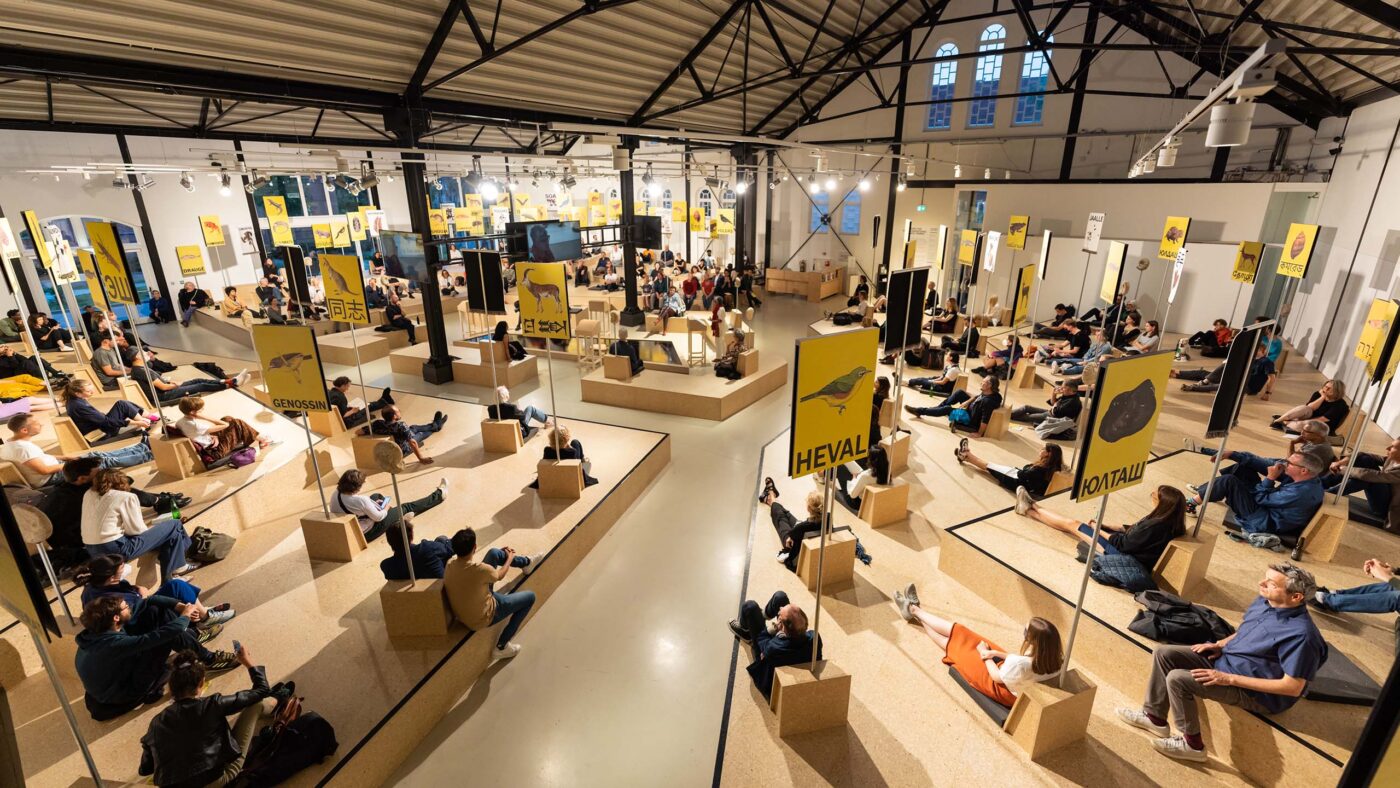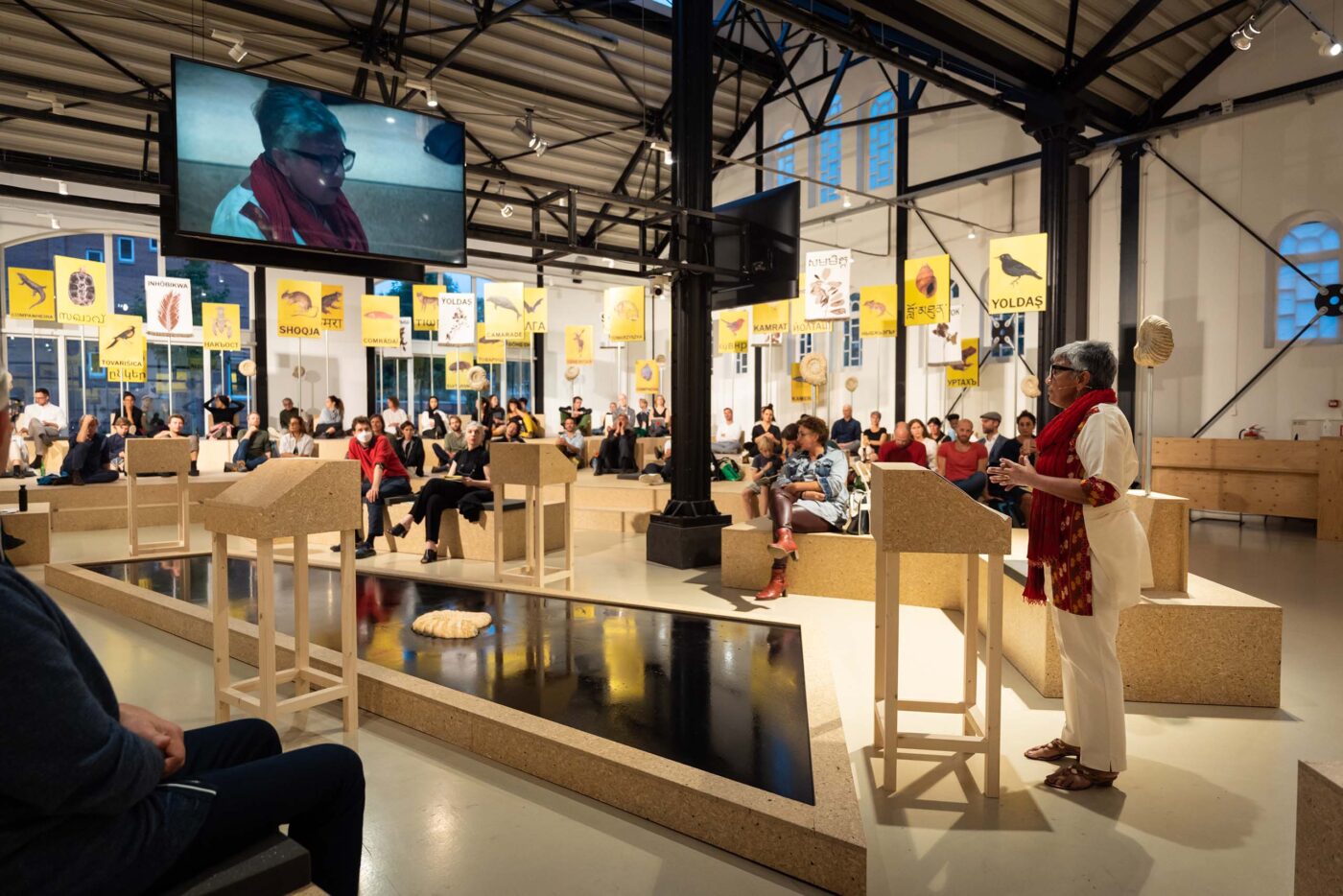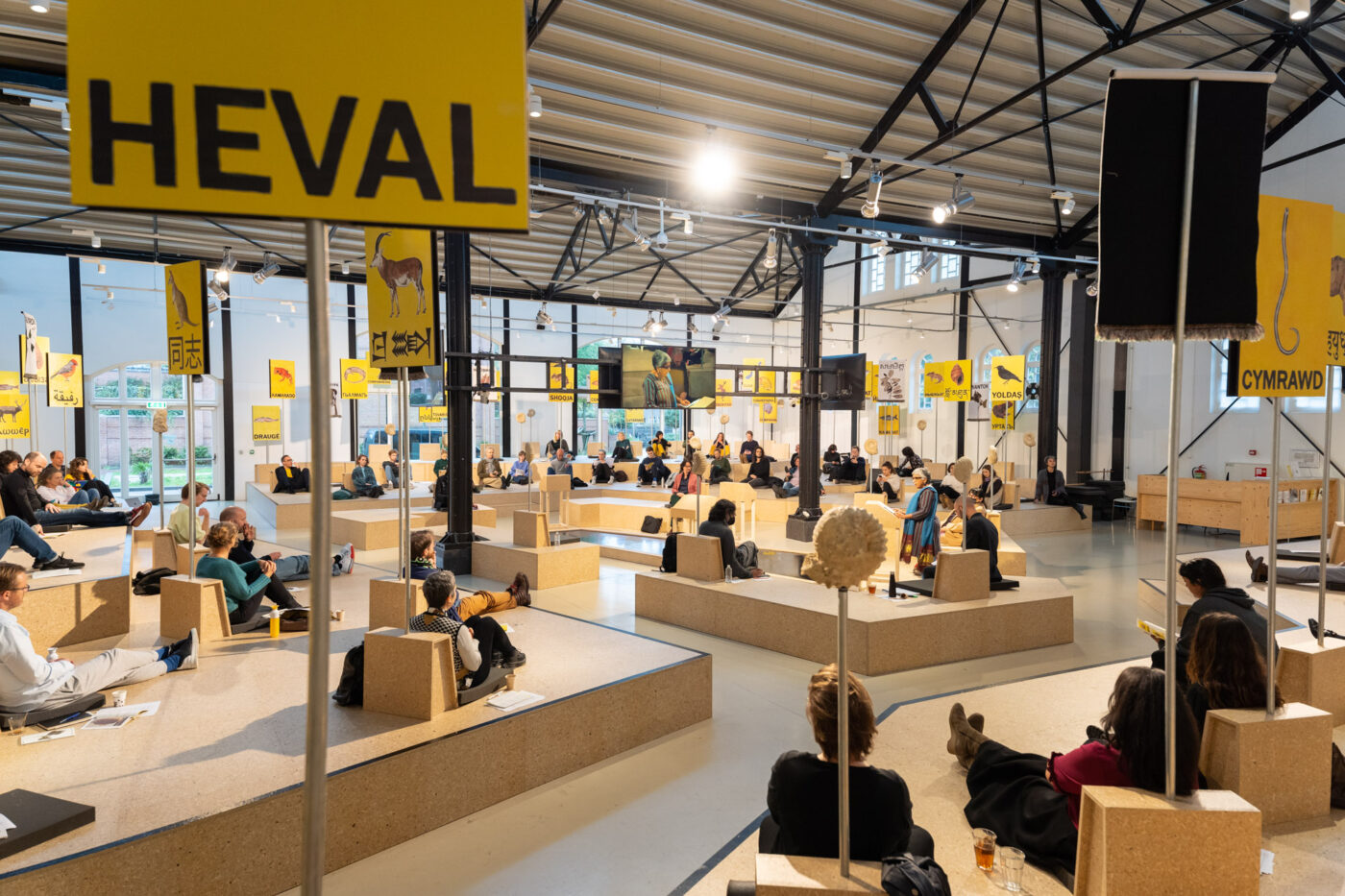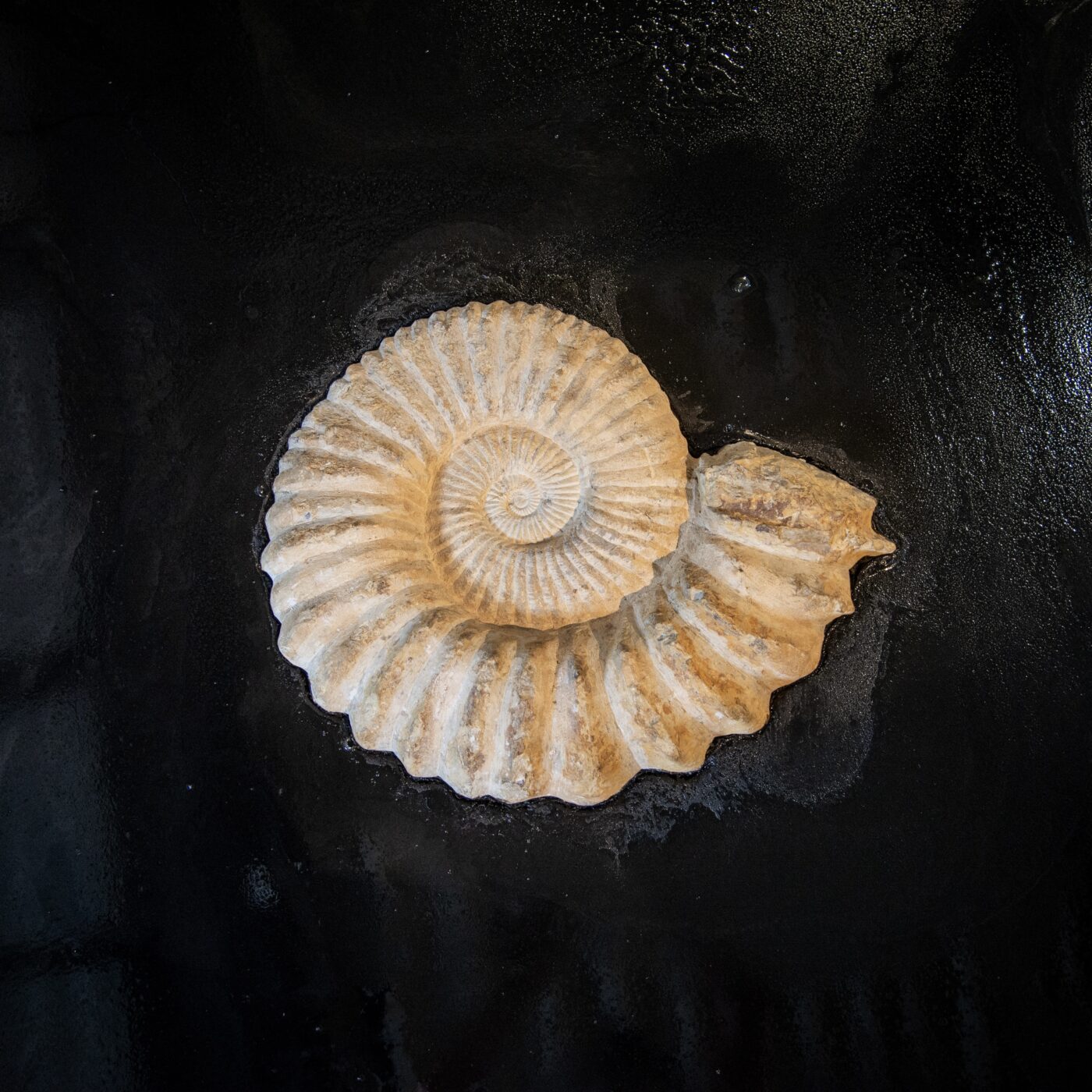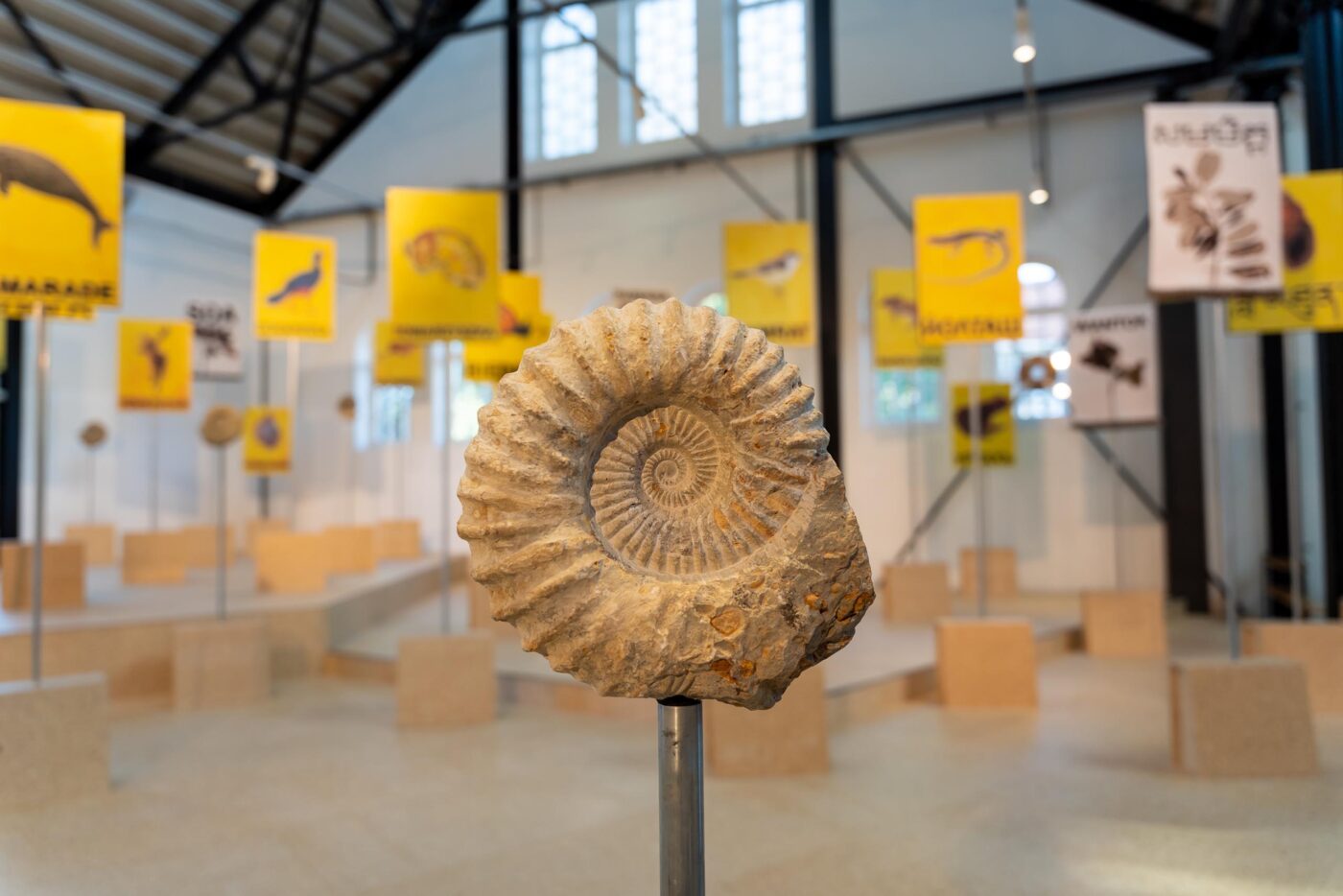Errant Journal: A conversation between Radha D'Souza and Jonas Staal
This conversation was first published in Errant Journal #2 on Slow Violence titled ‘Introduction to the Court for Intergenerational Climate Crimes (CICC)’ as part of a special on climate justice edited by Radha D’Souza and Jonas Staal. The journal issue also features contributions by the CICC judges on intergenerational climate crimes.
Order your copy of Errant Journal #2 Slow Violence here.
Jonas Staal: Your book What’s Wrong With Rights? is the starting point for our collaboration on the Court for Intergenerational Climate Crimes (CICC).[1] You analyse how the liberal discourse on rights translates to the human rights regime. Rather than strengthening the principle of the right to self-determination, the human rights regime individuates rights as a property, to the point of corporations being able to acquire personhood as well. You also describe how the human rights regime comes with mechanisms of coercion through international election monitoring and World Bank indebtment, undermining other forms of societal organisation and life-forms that defend the need to redistribute rights instead. In that light, you warn that social movements should be careful of playing into the narrative of the human rights regime, as this risks strengthening the powers that they aim to overcome. Could you say something more about what a redistribution of rights would entail in the context of intergenerational climate justice? And could you elaborate on what you have described as ‘nature as a relation’ that demands that we do not limit rights to human individuals alone, but acknowledge our interdependency with non-human and other-than-human comrades as well?
Radha D’Souza: In the book I write about land and nature being a relationship to challenge certain ideas first spawned during the European Enlightenment. Feudal societies everywhere were land-centric societies. Even though peasants and serfs were exploited, they were tied to nature, community and place. The European Enlightenment transformed land and nature into property, and people into ‘labour force’. The separation of nature and people, often forcibly, transformed both into commodities – living nature and people became ‘things’ that could be bought and sold in property and labour ‘markets’. I call this forcible rupture of the relationship between nature and people and their eviction from places ‘the original sin’ of capitalism.
One of the attributes of the human species is that they must, necessarily, engage with nature through work to reproduce the conditions necessary for life. This attribute, the necessity to labour in order to exist, the need to interact with nature to live, makes the human species distinct from others. When human beings work with nature, they form a bond with nature and with each other through their work. These bonds are the basis of community and place formations.
European modernisation ruptured those bonds. It transformed places into territories that requires authorisation by states through grant of citizenship for people to live and work. My point is, whatever the law may say about property and labour markets, the reality of life has reaffirmed over and over again through crises after crises that have riddled capitalist modernity, that it is not possible to reproduce the conditions necessary for human life when the relationship between nature and people is ruptured, or when it becomes an abusive relationship.
My point is that nature and people can never become commodities like shoes or shirts. People can work nature, grow cotton or make leather, and sell the shirts and shoes as products of their labour and engagement with nature. But when nature and labour begin to be bought and sold in their own right, as has happened since ‘the original sin’, both are destroyed. This is what we are witnessing today on a global scale.
You are a visual artist with deep commitment to social and global justice. I have seen and actively participated in some of your projects, for example in New World Summit – Utrecht (2016) and New World Embassy: Rojava (2016). What was it in What’s Wrong With Rights? that triggered your artistic and visual imaginary? The book is an academic engagement with law, a subject that many will consider dry and difficult. How did you identify artistic potential in the ideas that the book develops?
JS: When people ask me about your book and what it means to redistribute rights not as individual property, but as a collective endeavour, I always summarise it as follows: when the rights of a river are harmed, the rights of all humans, animals and plants that live in interdependency with that river are harmed as well. Thus, you shatter the illusion that rights can be individualised: rights are interdependent, and intergenerational, meaning that our actions in the present will be inherited by unborn comradely humans, animals and plant life of the future. Rights cannot be individuated but can also not be bound by the time in which we live, but concern both ancestors and successors.
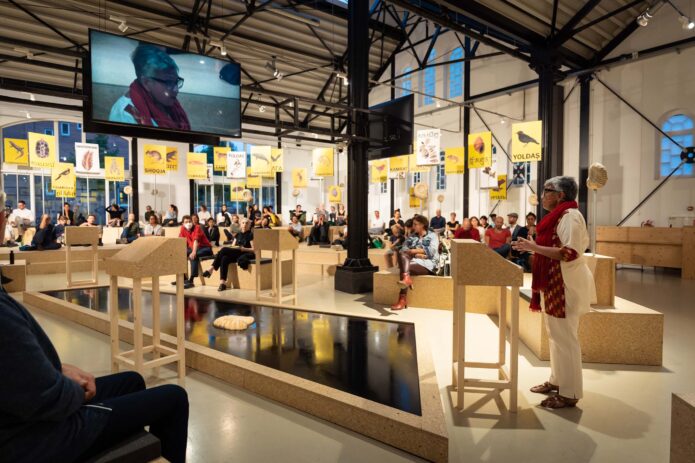
Photo: Ruben Hamelink
For me, this understanding of nature-as-relation that you bring about, is essential in conceptualising new forms of emancipatory institutions that can enact principles of social justice, and I was excited about the idea that we could translate some of your theoretical models into spatial morphologies. An idea always has a form. It offers a chance to not only study an idea, but inhabit it, embody it, and to make it actionable in different ways. This is how I saw our dialogue resulting in the CICC: an alternative, more-than-human tribunal to prosecute climate crimes of the past, present and future, in defence of an interdependent ecology of comradeship and a redistribution of rights – against what you termed the ‘original sin of capitalism’.
As a result, the space of the court that you and I have worked on, has become a kind of ecology in its own right – but one that does not deny the violation brought about by racial capitalism. Half of our court will be occupied by humans, the other half by images of extinct plants and animals, perished from the advent of colonialism – what you have described as the actual beginning of the climate catastrophe – as well as ammonite fossils: literally the fossils in fossil fuel. The fossils created by millions of years of earth work in the form of disintegrated bodies of animals and plants that are now burned to accelerate the present and make an inhabitable future impossible. They stand as non-human witnesses in our court, as comradely ancestors, and as evidence of violated ties in our shared ecology.
But what does it mean for you, as a writer, a thinker, activist and lawyer to engage with the field of art?
RDS: Your question touches a raw nerve in me as a writer, thinker, activist and lawyer. The most important precondition for a thinker is the freedom to think. Liberal rights to freedom of speech, expression and conscience throttle the very freedom to think that the right promises. Let me explain.
Most of the time, people go about their everyday lives engaging in activities to provide for their families and cement social bonds – festivals and rituals for example. However, every society throughout human civilisation has always had, and must have, some members of their communities who think about the future of the communities and the conditions necessary for its reproduction as a social unit, which of course includes their relationship to their natural environment. For this reason, indigenous communities valued their shamans and elders, feudal communities produced their gurus and itinerant preachers outside the formal institutions of religion. Women played a big part in thinking about futures of natures and communities, and ancient civilisations assigned a special place for them in society. These men and women foresaw dangers and acted like antennas and sensors to warn about existential threats. This social role of thinkers is magnified during times of crisis. Unlike animals, human beings do not have an instinctive sense of social danger and collective self-preservation. Human beings must cultivate that intuition through practice and knowledge. Thinkers and teachers play a big role in safeguarding conditions for life by acting as social antennas and sensors. Liberalism takes away the capacities of thinkers to act like social antennas and sensors of their communities to warn them about impending dangers to their survival.
Liberalism does this first and foremost by making thinking a paid professional occupation – and an individualist one at that. Thinkers are alienated from the world they think about. In a paid job, intellectuals are expected to think about the survival of the institutions that pay them, which is not the same thing as survival of natures and communities. When scholars speak about dangers to natures and communities, about the disastrous consequences of carbon emissions for example, they are expected by the institutions that employ them to do so in a way that leads to its certification, trading and carbon markets, so that corporations and states can survive first by emitting carbon, but also profit from the solutions. Secondly, liberalism dismisses ontological questions by which I mean the big questions about our life-world, such as: what is the meaning of life, what is its purpose, what is human destiny, ethics and aesthetics? In liberal philosophy these are worthless questions because they do not directly yield marketable results. Instead, liberalism privileges statistical reasoning necessary to administer large organisations, empiricism that limits thinking to what is visible on the surface, and atomism necessary for turning relations into ‘things’. Knowledge becomes compartmentalised into disciplinary silos such that we reduce the majesty of the universe into a small sliver of it. We lose perspectives on life as a result because we have no way of putting production, consumption and exchange into the wider context of human destiny and purpose. Knowledge becomes ‘knowledge production’ and a marketable commodity in service of the markets.
Merchants have always existed in all civilisations as people who facilitated exchange of goods and services. European Enlightenment, for the first time, makes the merchant’s view of the world and the merchant’s purpose the human world view and purpose. What does all this have to do with your question about what it means as a thinker to engage with the field of art? In one word it means freedom, the freedom to think.
Today, art is the only small island left that gives the space for thinkers to think. Of course, art is also hugely commodified and there is a global art market out there. Yet, at a time when universities are closing down philosophy departments, when philosophers are called upon to produce practically ‘useful’ knowledge, when the rupture with nature has alienated so many, that even many radical thinkers are often unable to join the dots, radical art offers the space from where new thinking can emerge about the big existential questions of our times.
You said that, for you, ideas always have form. Equally, we can say form shapes ideas. Human beings are concept dependent species. They need concepts to navigate their way around the world – when they see fire, they should be able to imagine what it will do to them if they touch it. Nature is an infinite source of forms, and for this reason it becomes an inexhaustible source of concepts and ideas. Nature cannot not exist except as forms and those forms in nature have shaped human concepts and enabled human beings to negotiate the world since times immemorial. In yoga for example, the idea that standing like a palm tree (tada-padmasana) strengthens your spinal cord, derives from a very scientific idea about the importance of posture for spinal strength, as well as from the very visual image of a palm tree. First, it invites you to imagine your back to be straight like a palm tree, and then it asks you to imitate it in daily exercises to keep your spine and therefore body healthy. All exercises in yoga mimic postures of animals and trees.
When our relation to nature is ruptured, as liberalism does, we lose our capacities to develop concepts and ideas from the infinite treasure trove of forms that nature provides. Here too art enables us to expand our imaginaries by visualising the fate of so many species and so much of nature that has become extinct because of our destructive social institutions. A depiction of the devastation caused by deforestation driven by states and corporations acting as accomplices could help us to imagine apocalyptic destruction of planet Earth. It could help us envisage the consequences of continuing to believe that states and corporations can be right bearing persons like you and me, and that they can be, both, the cause of our destruction and our saviours at the same time.
The CICC project is attempting to expand people’s imaginaries. To show how our legal systems which actualise philosophical and political liberalism, something my book delves into, creates these modern-day monsters called legal persons – like corporations and states – which are the focus of the CICC project. These legal persons work to reproduce the conditions of existence for corporations and states in ways that make it impossible for human beings to reproduce the conditions for their existence and for nature to regenerate. States and corporations say their survival is essential for the survival of life. The CICC project aims to show exactly the opposite is true – that states and corporations are not ‘people’ but legally established social structures that threaten the survival of all life forms and have already made extinction a reality for many species, including human communities.
Your art has always highlighted social movements and struggles. Historically, art has been an important mobiliser of social change. Do you see a movement of artists emerging in the same way from the intergenerational climate crisis that we are witnessing? What would the stylistic features of the art forms look like? Can it challenge the dystopic art movements inspired by pessimism that we are seeing in so many places today?

Photo: Ruben Hamelink
JS: For me, the way you describe art relates to the radical imaginary. The institutions of art, its infrastructures and financialisation, as you mentioned, are primarily tasked with reproducing legitimacy of the existing political and economic order. Artists are companies and artworks are stocks – its most substantial impact is, as artist Hito Steyerl observed, ‘to make capitalism beautiful’.[2] But the imaginary is not limited to the commodification of art, it belongs to everyone, and relates to our capability to imagine the world otherwise. And to change the world, we have to imagine change first. In that sense, artistic imagination is an essential component of any process of political transformation.
Of course, imagination cannot stand in and of itself. As artists dedicated to emancipatory politics, we re-imagine the world not as a task in and of itself, but to construct reality differently. To ensure a redistribution of wealth, to ensure common ownership, to dismantle the primacy of private property, to establish equal access to healthcare, education and culture. To achieve this, we have to be more than artists, but also organisers and propagators, agitators and mobilisers, and, most of all, comrades in social movements and emancipatory political organisations.
From the work of Forensic Architecture dealing with the weaponisation of the climate in perpetuating war crimes, to the agitational performative protests under the slogan ‘We are nature defending itself’ by the Laboratory for Insurrectionary Imagination, and the food and seed activism of Zayaan Khan, I certainly see artists and cultural workers organising to confront the political and economic forces that drive the climate catastrophe. But more importantly, I see that they don’t do this under the guise of the ‘autonomist artist’, but as part of a relational alliance with progressive lawyers, activists and emancipatory political leaders. Just as you make clear that we should reject the individuation of rights in order not to reproduce liberal fallacy, so should we equally not individuate the imagination, and the work to transform imagination into political reality.
This for me is essential, to understand artistic imagination, to understand radical imagination, as common and relational. To cut it from our larger struggle, to isolate it, is to reproduce the separation that you describe between humans and nature. It means to commodify the imagination as something that can be held, traded, priced, owned. Ideas have forms, and forms shape the practice and furthering of ideas – this is at the core of an interdependent emancipatory artistic and cultural practice that breaks with the idea of the sovereign artist. The artistic and cultural heritage I work from is inherited from the new forms of art and culture that contributed to, and became possible through, new forms of politics, from the Soviet revolution to Thomas Sankara’s eco-socialism, from the Sandinista’s to the social ecology furthered by the Rojava Revolution.
That brings me to a hard question to answer. You and I, through your research in What’s Wrong With Rights?, have conceptualised a visual morphology of an alternative climate tribunal. One that acts upon your proposition for a redistribution of rights, by proposing a space where we enact interdependent and intergenerational rights for our human, non-human, other-than-human, and more-than-human comradely ancestors, for the human, non-human, other-than-human, and more-than-human comrades living – surviving – our violated present, and for the unborn human, non-human, other-than-human and more-than human comrades yet to come. We have imagined this, but how will we bring it into practice? How do you envision, at this stage, the legal framework and procedures for the prosecution of intergenerational climate crimes in the CICC? Can we contribute to bridging the space between artistic and legal imagination, to shape political reality?
RDS: The essence of your question is about the relationship of theory and practice. The relationship between knowing and acting is one of the big mysteries of life in my view. What impels us to act or do something? Liberalism has normalised the idea that knowledge will automatically lead to rational action for change, and that rights facilitate the passage from rational knowledge to rational action. Is this true, however? There is a large body of scientific knowledge that has been warning us for many decades now that the way we exploit nature is having disastrous effects on our lives, and an equally large body of knowledge that tells us wars and corporate looting of the Third World conducted by military-industrial complexes are the main causes of the migration crisis that is occurring on a global scale. If knowledge and reason, mediated by rights, lead to actions for change, we would all be out on the streets to end all wars, all corporate looting and abuse of environment, and the politicians would readily bow to popular will and end abuse of natures and peoples, as they are supposed to do in theory. That is not happening, and it is not because we do not know what is wrong. This is where the attribution of personhood to states and corporations and their relations become so central – as the CICC project hopes to show.
The important thing to bear in mind is that change could happen and happen suddenly. Revolutions in history have always been unexpected events, they have always come as a surprise. Who thought the Bolsheviks would win? Or the French peasants would put the aristocrats under the guillotine, or that the Chinese would succeed in the Long March? Often these changes are sudden. Radical change happens when there is a constellation of conditions. The mighty Soviet Union suddenly and quickly imploded, as did the British Empire. George Floyd was by no means the first African American to be murdered by the police. Why did his murder ignite such global reaction? For twenty-five years people of Bristol in the UK had campaigned for removing the statute of the slave owner Colson, then one day on an impulse, with no planning whatsoever, they threw his statute into the river in a totally spontaneous way. How did that happen?
Institutions implode under the weight of their own contradictions. This is also true for states and corporations. The real question for political action is this: when the institutions implode, are we ready to seize the moment and change the world? For example, capitalism’s collapse in the early twentieth century led to two world wars, and opened up spaces for political actions in unexpected ways. The fascists, and different schools of liberals, intervened to restore and rebuild capitalism. The socialists and anti-colonialists also seized the moment to push their own agendas for liberation. They had been preparing for a long time so that when the institutions of markets, states, and civil society imploded, they had their own agendas ready at hand, and they could tailor their interventions to gain maximum advantage for themselves. They did succeed in doing that, at least partially. We can and must continue to take inspiration from our histories, study closely why and how revolutionary change occurs, continue to expand our knowledge of the world, how it works, how it exploits and oppresses, and continue to reimagine a different kind of world, continue to dream of freedom and prepare to seize the moment when it comes. States and corporations, the institutional pillars of contemporary societies, are already caught up in so many internal contradictions of their own making – global/national, economic/political, ideological/practical and much else. They could implode unexpectedly. By helping people to reimagine a different kind of world, we are preparing for that moment, so that we can seize it as others have done in the past.
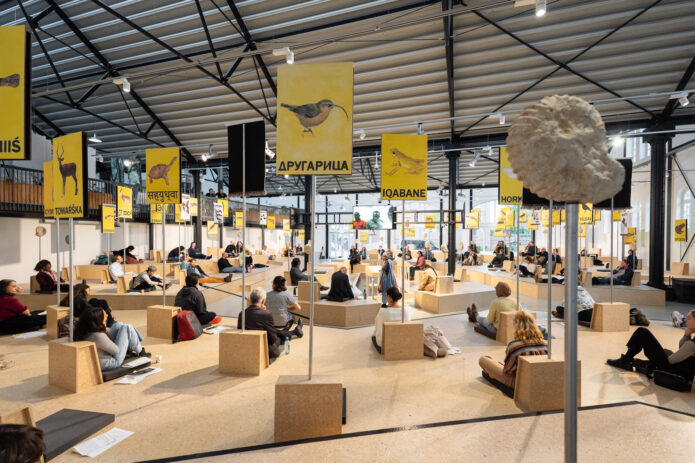
Photo: Ruben Hamelink
The well-spring of action is our ‘inner world’, call it emotional, psychological, spiritual, ethical, aesthetical whatever. Our ‘inner world’ is formed by our social world over extended time-space conjunctures. Liberalism negates this very deep well-spring such that we are no longer able to comprehend our sources of inspiration and action. Like the nature-labour dualism with which we started this conversation, the body-mind dualism is also foundational to liberal thought. It took the European Enlightenment thinkers a long time through successive movements in philosophy, theology and science to establish the body-mind or mind-matter dualism. Like with the forced displacement of people from land that alienated them from nature, the body-mind dualism introduces a schizophrenic relationship between our biological existence, food, clothing, shelter and such, our social existence, friends, family, solidarity, community and such, and our ‘inner life’. Having thus separated nature from people and people from their ‘inner lives’, liberalism seeks to reconnect the three through ‘free will’, which is also a fundamental concept. ‘Free will’ is premised on reason which operates in the domain of the mind. Collective action cannot come from atomised minds, however. That is why radical art and literature, that is, art and literature that is not commodified, is so essential to restore our ‘inner self’ which is the well-spring for action. There cannot be transformative change without knowledge that speaks to our reason. At the same time there cannot be transformative action if that knowledge is not accompanied by art, literature and music that can speak to our hearts, our ethics and aesthetics.
The CICC project deconstructs legal frameworks and procedures and shows how they are based on the ontological falsehood that state and corporations are ‘persons’. The project exposes how the law creates these golems and breathes life into them, and how the extended lives of states and corporations as legal persons allows them to commit crimes that are intergenerational. By deconstructing and exposing the state-corporation relationships and their complicity in intergenerational climate crimes, the CICC project will, I hope, contribute to bridging the gap not only between artistic and legal imaginations, but also help to connect our minds to our ‘inner self’ so that we are able to act to shape political and social realities.
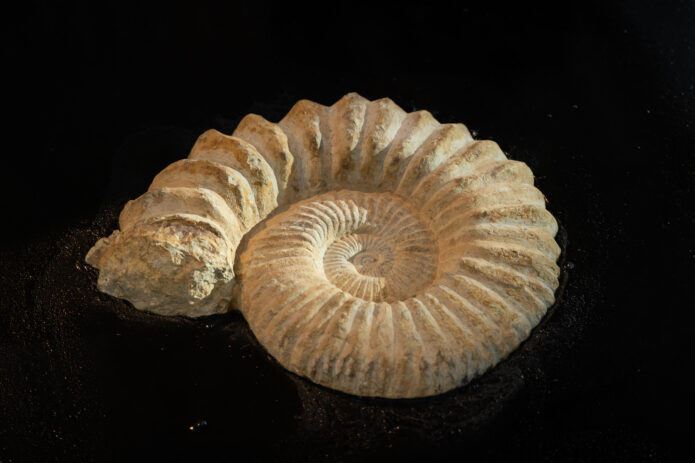
Photo: Ruben Hamelink
[1] D’Souza, Radha, What’s Wrong With Rights? Social Movements, Law and Liberal Imaginations. London: Pluto Press, 2018.
[2] Steyerl, Hito. The Wretched of the Screen. Berlin: e-flux journal and Sternberg Press, 2012: p. 93.
All public hearings during the CICC have been recorded and can be viewed here: https://vimeo.com/showcase/9091118
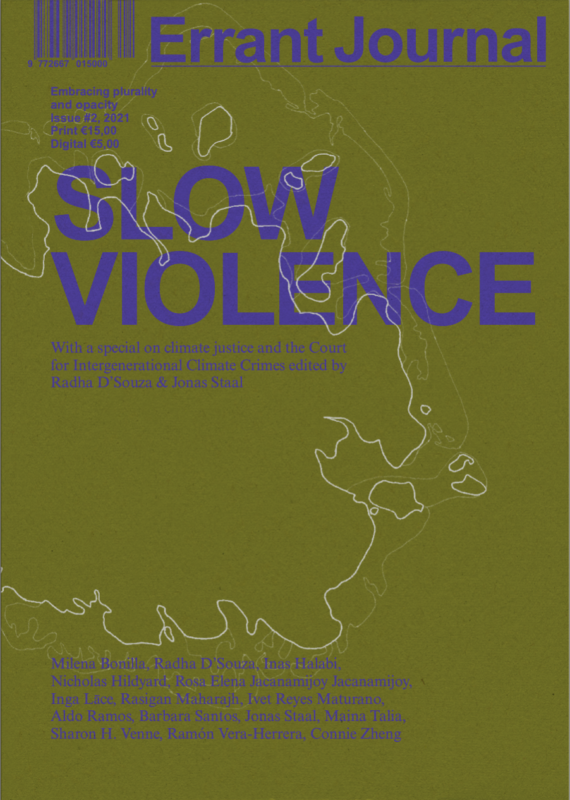
Order your copy of Errant Journal #2 Slow Violence here.
CICC / Ecology / Colonial history / Art and Activism /
Exhibitions
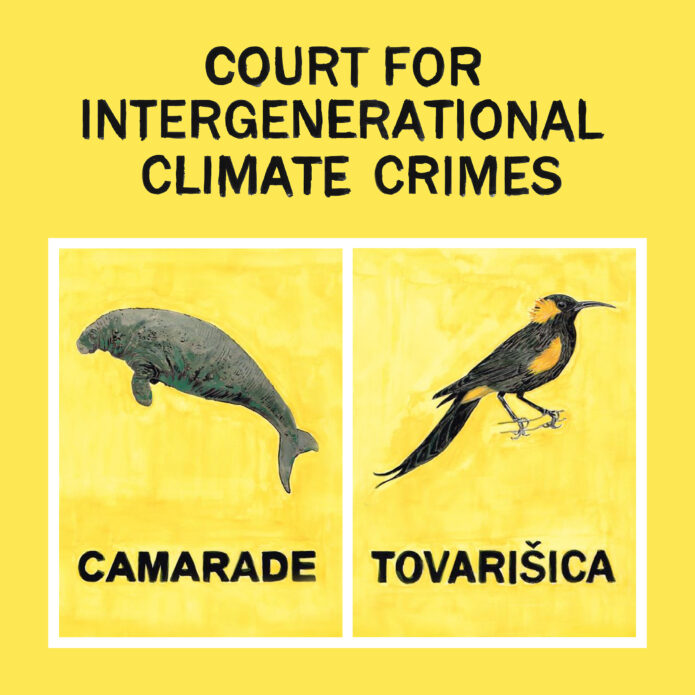
Exhibition: Court for Intergenerational Climate Crimes
A project by Radha D'Souza and Jonas Staal
Agenda
Launch: Errant Journal #2, Slow Violence
Errant Journal is a concept by Irene de Craen, realised in collaboration with Framer Framed
Network

Radha D'Souza
Writer, academic, lawyer and activist
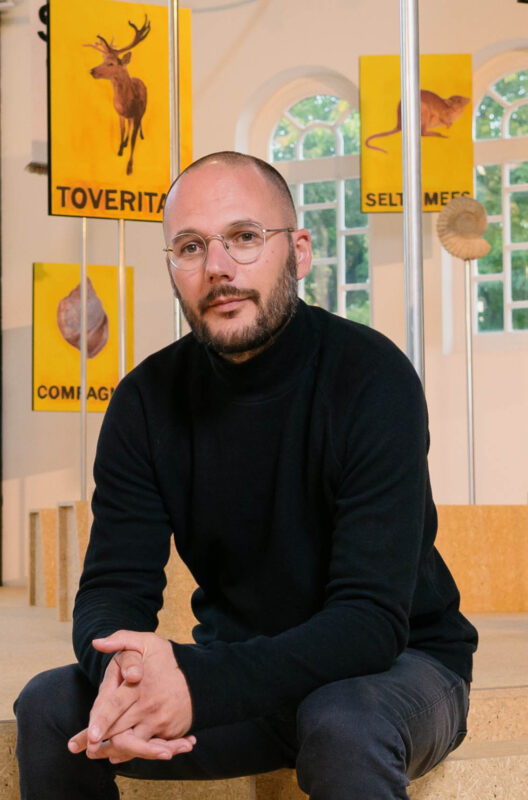
Jonas Staal
Artist
Magazine


Report: The CICC, a DIY Court for Climate Crimes

Digital Archive: Court for Intergenerational Climate Crimes

